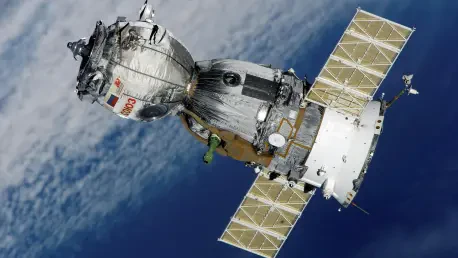The race to connect the globe through low Earth orbit (LEO) satellite constellations has reached a critical juncture, with thousands of satellites already in orbit and millions more planned, promising to bridge digital divides by delivering high-speed internet to remote corners of the world. Yet, a growing chorus of industry voices warns that outdated regulatory frameworks, particularly power limits and spectrum constraints, could stall this transformative potential. This roundup gathers insights from a range of experts and stakeholders to explore whether legacy rules are holding back LEO satellite expansion and what solutions might pave the way for sustainable growth.
Examining Regulatory Roadblocks for LEO Satellites
The Clash of Old Rules and New Realities
Current power limits, often rooted in standards set decades ago, are a focal point of concern for LEO satellite operators. Established by international bodies, these restrictions—known as Equivalent Power Flux Density (EPFD) limits—were designed to prevent interference between geostationary (GEO) and non-geostationary systems. However, many industry analysts argue that the assumptions behind these limits no longer align with today’s reality, where vast constellations of LEO satellites demand higher power levels to meet surging connectivity needs.
Data from international filings reveals over 1.7 million satellites registered for future deployment, a scale unimaginable when these rules were first drafted. Experts contend that constraints based on GEO satellite designs from the mid-20th century fail to account for the agility and density of modern LEO networks. This mismatch, they suggest, caps the capacity of LEO systems, limiting their ability to deliver robust services to underserved regions.
A counterpoint emerges from some regulatory specialists who caution against hasty revisions. While acknowledging the need for updates, they highlight that increasing power levels could introduce unforeseen interference challenges, especially as more constellations crowd orbital paths. This tension between pushing for innovation and maintaining orbital harmony remains a central debate in shaping future policies.
Spectrum Shortages and Gateway Challenges
Beyond power limits, spectrum scarcity poses another significant hurdle for LEO satellite expansion. Gateways, the ground stations linking satellites to terrestrial networks, often require placement in remote areas due to limited spectrum availability. Industry observers note that this restriction creates operational bottlenecks, slowing data transmission and hampering service scalability.
Proposed solutions include dynamic spectrum sharing, a concept that has shown promise in other sectors like the Citizens Broadband Radio Service (CBRS) band. Advocates argue that database-driven coordination could allow LEO gateways to coexist with other spectrum users, maximizing efficiency. Such an approach, they believe, could unlock critical bandwidth without requiring sweeping regulatory overhauls.
However, not all stakeholders are convinced of this strategy’s feasibility. Concerns linger about potential conflicts with mobile carriers who have invested heavily in spectrum rights. Protecting these prior investments while accommodating LEO needs is a delicate balance, with some experts warning that shared spectrum models could disrupt established markets if not carefully managed.
Weighing Innovation Against Orbital Sustainability
Risks of Power Limit Reforms
Revising EPFD limits to enable higher power for LEO satellites is often touted as a key to unlocking greater capacity. Proponents argue that modern technology can mitigate interference risks, making increased power levels both safe and necessary. This perspective sees regulatory reform as a stepping stone to meeting global demand for connectivity, especially in regions lacking traditional infrastructure.
Yet, there are notable reservations within the industry. Some analysts point out that while higher power may benefit current operators, it could complicate future LEO deployments by intensifying interference risks. This concern underscores a broader challenge: ensuring that short-term gains do not jeopardize long-term orbital sustainability as more players enter the space.
Additionally, the role of GEO satellites remains a critical consideration. Often relied upon for emergency services and specialized applications, GEO systems still hold value in a landscape increasingly dominated by LEO constellations. Experts stress that any regulatory changes must account for the coexistence of these systems, avoiding a one-size-fits-all approach that could marginalize vital services.
Spectrum Sharing as a Potential Fix
Exploring shared spectrum, particularly in the millimeter wave (mmWave) band, has gained traction as a way to ease gateway constraints. Some industry voices suggest that mmWave offers a low-conflict option for coexistence between satellite services and fixed wireless access. This band, underutilized by some mobile operators, could provide a practical avenue for expanding LEO operations without displacing existing users.
Others advocate for dynamic coordination mechanisms to manage spectrum sharing effectively. Such systems could adapt in real time to usage patterns, ensuring fair access for all stakeholders. This forward-thinking approach, while complex to implement, is seen as a way to foster collaboration between satellite providers and terrestrial networks.
Still, questions of market equity persist. There is apprehension that spectrum sharing could inadvertently favor certain players, creating disparities in an already competitive field. Balancing innovation with fairness remains a sticking point, with ongoing discussions about how to structure these arrangements to benefit the broader ecosystem.
Strategic Perspectives on LEO Satellite Growth
Gathering insights from diverse industry perspectives reveals a consensus that outdated EPFD limits and spectrum scarcity are formidable barriers to LEO satellite potential. Many agree that regulatory bodies like the FCC must revisit these frameworks to reflect current technological realities. However, opinions diverge on the pace and scope of reform, with some urging caution to avoid unintended consequences like interference or market imbalances.
Practical recommendations include investing in dynamic spectrum sharing models to alleviate gateway constraints. Encouraging collaboration on mmWave utilization also emerges as an actionable step, offering a pathway to expand capacity without destabilizing existing systems. These strategies, while promising, require careful coordination to ensure they serve the needs of all orbital and terrestrial players.
Regional variations in regulatory approaches add another layer of complexity. Different countries prioritize spectrum and power management in unique ways, influencing how LEO operators navigate global markets. Stakeholders emphasize the importance of harmonizing policies where possible, while still allowing flexibility to address local priorities and challenges.
Reflecting on the Path Forward for Satellite Connectivity
Looking back on the discussions, it becomes clear that modernizing regulatory policies is a pressing need to keep pace with LEO satellite advancements. The urgency to update power limits and address spectrum shortages is a recurring theme, balanced by a shared recognition of the risks tied to unchecked reforms. Experts and stakeholders alike grapple with finding equilibrium between fostering innovation and protecting the orbital environment.
Moving forward, actionable steps emerge as a priority. Pushing for adaptive frameworks that support both GEO and LEO operators stands out as a key solution, alongside deeper investment in spectrum sharing technologies. These measures, if implemented thoughtfully, could help unlock the full potential of satellite connectivity while safeguarding critical services.
Another consideration for the future involves fostering international dialogue to align regulatory approaches. Building consensus on power and spectrum management across borders could streamline operations for global LEO constellations. This collaborative spirit, combined with targeted policy updates, offers a roadmap to sustain growth in this dynamic sector for years to come.









